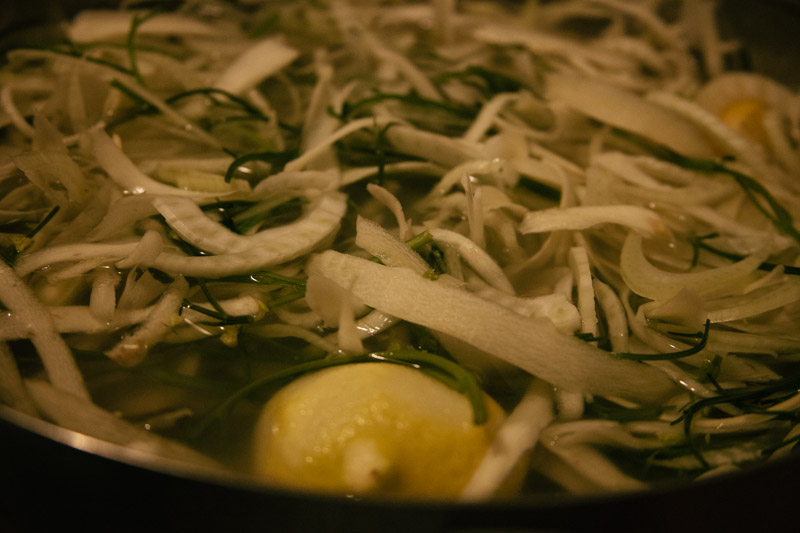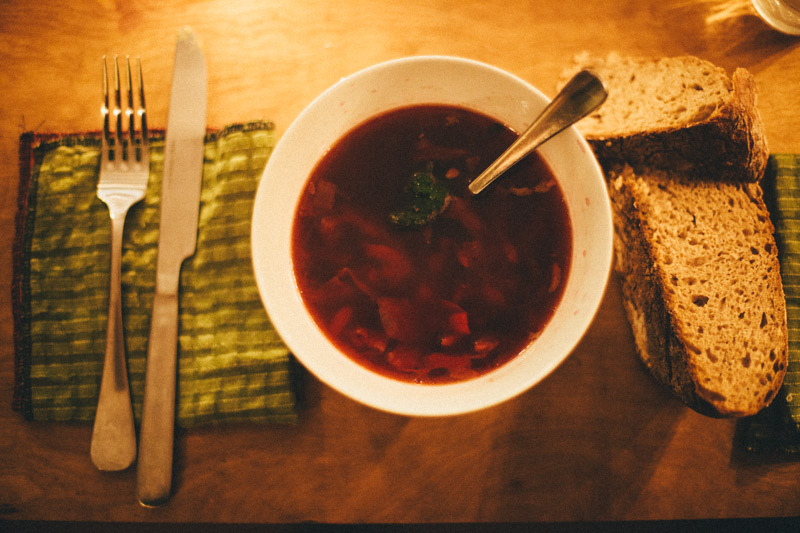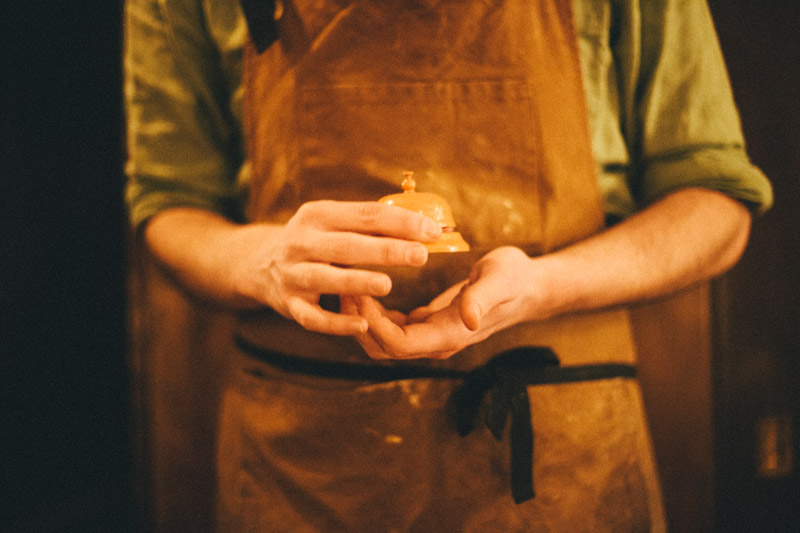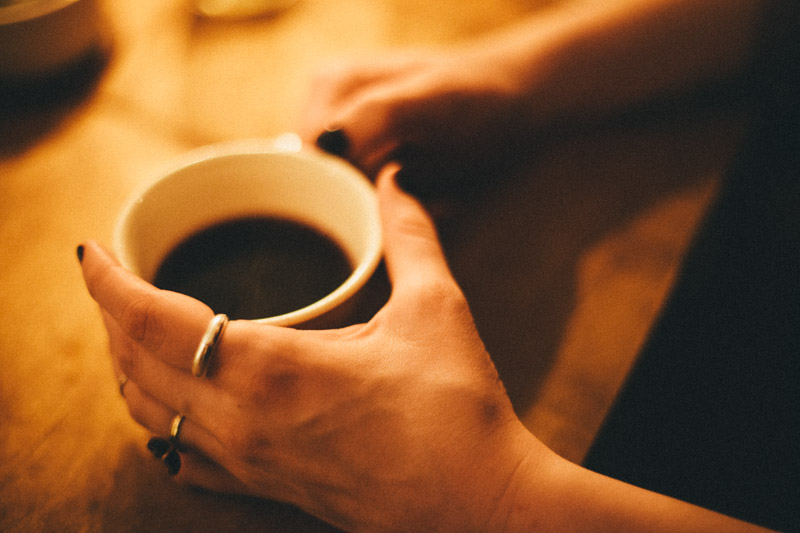BERLIN WINTER
(first day of february. number 46.)
This meal stemmed from a desire to revisit the incredible eating experiences I'd had during a week spent in Berlin, Germany last winter. Some dishes were direct revisitations, others closer to abstract takes on candlelit memories.
Some other influences: The Magic Mountain, a novel by German author Thomas Mann (recommended by my friend Paul, who was a guest at the dinner), the amazing pickle board at the Savoy Tavern, the food and style of Fressen (a German artisan bakery mentioned often on these pages, but who only recently opened a brick & mortar location with a wonderful food menu), the food at Grüner (Portland's northwest 'Alpine' cuisine restaurant), the meal I ate at San Francisco's Bar Tartine last spring, and reading Tartine Bread No. 3 cover to cover,
I was up until 3 a.m. for 4 successive days making this dinner, only getting about five hours of sleep each night. On Wednesday, I was making pickles, on Thursday, I was making the stained glass crispbreads, on Friday, I was making the loaves of hearth bread and the soup. By the end of this stretch, I was slightly punchy. Lucas and Sofie knew this one was my vanity project or whatever, and were very supportive, letting me be crazy, and swooping in gracefully to execute the event.
1:
Winter Pickles, Mustards, Baked Cheese, Poached Pears, Stained Glass Crispbreads
Winter pickles: black radish, scarlet turnip, fennel, bosc pear, celery, rainbow carrot, cauliflower, and leek. They were made with a simple quick pickle brine of white vinegar, apple cider vinegar, white wine vinegar, black mustard seeds, yellow mustard seeds, and coriander seeds.
We had two of the most exquisite mustards in the world out, from Eidelweiss Sausage & Delicatessen- a black pepper/beer mustard and a dijon made with German white wine. When Lucas went to buy them they told him that Safeway has been trying to buy the recipes from the lady who makes them for like 30 years and she has been staunchly refusing!
To cut all this sharpness, there were small ramekins of brie out along the tables, topped with sprigs of rosemary, melting and aromatic.
Sofie poached some comice pears in a mixture of simple syrup, juniper berries, and rosemary. The pear juice leaked out into this mixture, and they spent some time sliced and being basted in the oven. They were served suggestively alongside the cheese and provided a sweet break from all the sharp flavors.
To even everything out and provide a necessary backbone, there were these stained-glass effect parsley caraway rye crispbreads. The crispbread master technique is from Tartine Book N.3. It was the first page I opened to after finding the book under the tree at Christmas. The second I laid my eyes on them, I knew the book was another masterwork and that I had to make them as soon as possible. The dough was fermented with wild yeast for 9 hours, then rolled out incredibly thinly on the pasta attachment of the KitchenAid, the parsley laid down, the dough folded over, malden pressed into one side, rolled out again, then baked quickly and carefully.
2:
Hearth Loaves and Cellar Soup
I road in a Eurovan with a partially broken door from Paris to Berlin, going from bucolic crisp sunshine to deep winter and its frost covered windows. It did not snow until the day after we arrived, but that first night, we could tell it was coming. We walked up the simple and elegant stairway to find a gorgeous apartment with twelve foot ceilings and enormously wide planked wooden floors, to the smell of hot borscht on the stove and bread heating in the oven. We were served deep bowls of it, with the hot bread (rye) and sweet cream butter.
The host, a dancer man who divides his time between San Francisco and Berlin, told us he made the borscht from memory, but that it was basically the recipe from The Moosewood Cookbook, tweaked with 20 years of experimentation.
With this experience as a jumping off point, I looked at the Moosewood recipe, and cut things here/added things there. Purple potatoes, purple carrots, red cabbage, beets. Started with yellow onions, deglazed repeatedly with lager. Mustard, apple cider and red wine vinegar, providing a sharp contrast to the sweet, and lifting the funk from the cabbage and beets.
I made two breads from Tartine Book N.3– the oat porridge bread, and a 10% rye (made with Lonsesome Whistle farm Dark Northern Rye flour- they are an amazing grower of heirloom grains outside of Eugene).
The bread was passed around and served with whipped parsley and dill butter.
3:
Parsley Root and Stem, Fennel, and Smoked Trout Salad
I found parsley root at the Alberta Co-Op, blocks from my house, about a week before the dinner. I went back a few days later and bought all that they had after thinking up this salad. It was from a small farm in Washington somewhere. I must admit I'd never ever really heard of parsley root being used, but I'd been making a lot of salads with celeriac this fall and winter, and after covertly tasting a bit there in the store, I was convinced it'd make a great salad for this dinner. The roots (which look a lot like parsnips or white carrots) were peeled into ribbons and bathed in lemon water.
Lucas had the idea to make the stems of bunched parsley (so often discarded) more palatable and exciting (not to mention pretty) by blanching them in dashi. This worked magnificently, bringing out bright color and tenderness. All the parts one normally doesn't eat! The pieces danced gracefully around each other on the plate and in each forkful.
The fennel was simply cut thinly and added to the lemon water with the parsley root. The finished salad was dressed with lemon juice, white wine vinegar, olive oil, malden sea salt, some of the dashi, very little else. Topped with flecks of Newman's Fish Co.'s exquisite smoked trout.
4:
Spätzle with Dandelion Greens and Caraway/Black Pepper Soured Cream
I didn't actually eat any spätzle in Germany, but I remember my grandmother making it a few times when I was a kid, and I've recently been eating it as one of the best $5 lunches out there, at Fressen (a cast-iron full, covered in cheese & sauerkraut & caraway seeds, served with a pretzel roll and mustard), since it is so close to the school where I teach.
But in Berlin, I was staying with/mostly hanging out with professional dancer people, and across the street from this complex of dance called Ufer Studios, there is a café run by Portuguese folks named Kaffee Pförtner. I went there 3 or 4 times during my week there, for everything from a morning pastry to late night dinner. For the latter, I ate a giant gnocchi, the only time I'd ever seen it done/heard of it (outside of the time we made them as a New Year's remix, back in 2011), and this was filled with dandelion greens and chalky, peppery cheese. This balance of rich dough with tangy, bitter greens, leveled out with well-placed dairy was perfect. That's where the inspiration for this dish came from.
For our version, we made a large quantity of spätzle (sooo much time, for all 3 of us, standing over two pots of boiling water with colander pushing bits of dough through– German grandmother's must have SO much time on their hands), having snuck caraway and black pepper into the dough, then tossed it with a light béchamel sauce made with havarti cheese. Then, it was baked with criss-crossed raclette over the white dishes.
The dandelion greens were cooked in a wok with little adornment, then mixed in with the finished spätzle. We made our own cultured sour cream, seasoned with more toasted and ground caraway seeds and loads of cracked black pepper, which was served in a generous dollop on top.
5:
Cherry/Almond Cake
Every day that we were in Berlin, my best friend and I would go to to this amazing café called Weinerei Forum. It would open late, for a place that served coffee and pastries– 10 a.m. or something– and would start like any other coffee shop, but by noon would serve hot soups and damn fine german breads, quiche with winter vegetables and tangy cheese, dumplings with vegetable gravy, fresh pasta with perfect herby clam sauce, sandwiches made on bavarian croissants…Then, as the lunch food ran out, it was not replenished and the place transitioned into a venue for the German tradition of afternoon coffee and cake. Or gluwein and cake. Or tea and cake. The point is that the cakes started rolling out, always not-too-sweet, always with some kind of ground nutmeat in the flour, and usually centered around some kind of sharp tasting preserved fruit (plums, & currants were the most frequent). In the evening, the place became a wine bar that served no food and was self serve with an honor system bucket for payment. This café is an example of how modern day Berlin, to my eyes, has a sort of otherworldly perfection to it.
This cake was made using a Nigel Slater almond cake as a guide– I cut 100g of the sugar, added slightly more nutmeat, added some almond extract to send the flavor home (and since cherry liqueur is such a memorable flavor, there was something nice about the slight booze note almond extract brings). After defrosting some cherries (S.G.) from Secret Garden II, excess moisture was squeezed out, and they were cut up in the food processor, then folded into the batter with some thicker almond pieces. Sofie made an excellent glaze starting with apricot preserves which brought the whole thing up a notch. Served with a small pile of the tangy, just-defrosted cherries on the side.
To Drink:
Opel Cocktail
Family friends won a case of Rogue Distillery booze, and donated some of it to Secret Restaurant. So we had their excellent Spruce Gin to work with, and made up a cocktail out of the following: Dolin dry white vermouth, the Spruce Gin, and the syrup from the poached pears (pear juice, juniper berries, rosemary). We took inspiration from the 'Homestead Cocktail' in the Savoy Cocktail Book, and the White Negroni posted by Molly and Brandon Weizenburg in their cocktail column on Food 52.
It is named after a turn of the century German car shown on a leather coaster I purchased at a flea market in Berlin on a snowy afternoon.
Assorted Wines
Guests are encouraged to bring wine if they would like it to flow throughout the evening. Folks brought some very nice ones this time; so I thought I'd note some specifics. Our guest Niko Grimanis (the only first generation half German person in attendance) brought a Donnhoff Reisling (2012.) Two sets of guests, Kate (the dark lady you see in many of these photographs) and Peter (our photographer, her husband) as well as Sofie's mom Mary and her partner, Vern each brought "Sharecropper's'" Columbia Valley Cab Sauv (2012). We also had: Tribunal, labelled as 'North Coast Red Wine' (2011), which was remarkably good with the spätzle.
Gluwein
A bottle of the same Gluwein available for like 3euro in Germany, found at Eidelweiss, plus a bottle of "?" (a good but cheap blended red), some blood oranges, some star anise, some cloves, and that's it. Slow simmered and served in coffee cups with dessert.








































